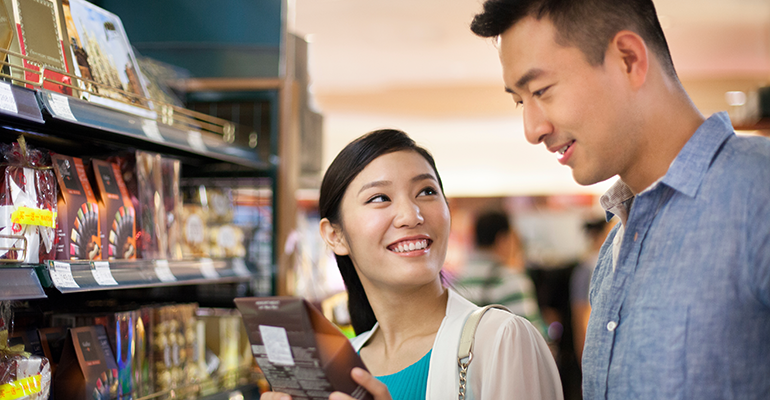Welcome to SJGLE.com! |Register for free|log in
Welcome to SJGLE.com! |Register for free|log in

Related Searches: Tea Vitamin Nutrients Ingredients paper cup packing
Guochao (国潮), which translates as national wave or national trend, is a form of Chinese revivalism wherby elements of traditional Chinese culture and style are incorporated into modern products. The movement is thriving in the fashion and beauty industries, but its influence is also being felt in food and drink.

© AdobeStock/Blue Jean Images
“Via the guochao trend, Chinese consumers’ perception of ‘Made in China’ is no longer perceived as low quality but is perceived as trendy and fashionable,” write Mintel analysts in a report A taste of key Asian markets for food and drink brands.
Propelled by social media, the movement has been given a boost from e-commerce platforms such as Alibaba and Tmall, which run annual guochao campaigns to support Chinese brands.
Western brands trying to penetrate the potentially lucrative Chinese market have also been quick to leverage guochao in a bid to appeal to Chinese consumers by rebranding packaging or launching limited edition regional flavours. However, Chinese consumers can be quick to spot inauthentic efforts.
In recent years, the guochao movement has evolved to become more sophisticated, according to an article written by the China-Britain Business Council (CBBC), the UK’s national business network promoting trade and investment with China,
“The time when putting an existing product in Chinese-style packaging could win a round of applause is long gone. To remain competitive in the battle for successful guochao marketing campaigns, brands need to deepen their understanding of their target audience as well as the culture they exist in,” said the CBBC.
The CBBC gave some examples of food industry guochao failures that, instead of galvanising positive attention for the brand, prompted a backlash.
Confectionery giant Mars, for instance, launched a customised Lunar New Year gift box in 2020 in collaboration with the Forbidden City under its Dove chocolate brand (sold under the brand name Galaxy in the UK, Ireland, Middle East, India, and Australia). However, consumers were unimpressed with product, noting that it was the same as other chocolate boxes and the link with the Forbidden City was little more than a small logo printed on one corner of the box.
Meanwhile, in an example of flavour innovation that could only happen in China, alcopop brand Rio partnered with Liushen Florida Water – an insect repellent company and well-known household name in China – and boldly launched a ready-to-drink insect repellent-flavoured cocktail.
While the product did initially spark a purchasing frenzy as people were “intrigued by the bizarre flavour”, noted CBBC, it was ultimately a flop with consumers left unconvinced by the taste.
Brands wishing to create products that resonate with consumers and create meaningful connections should avoid such tactics that aim for cheap buzzes and social media attention.
“Collaborations that are deemed superficial or adopt inappropriate cultural elements not only fail to resonate with the target audience but also put the brand’s image at risk, ultimately resulting in a loss of consumer interest,” writes CBBC. “The unenthusiastic consumer reactions to campaigns like those from Dove and Rio have started to sour guochao-themed campaigns overall, suggesting that some Chinese consumers are starting to experience ‘guochao fatigue’.”
Could these Western guochao failures spark consumer fatigue, disrupting many Western brands’ dominance and fuelling interest in local Chinese brands?
Mintel notes that while Chinese brands are catching up, Western brands still dominate by displaying a solid ability to localise for the China market.
“Multi-national food and drink companies have confidence in the China market. They have increased their investment after achieving remarkable growth in recent years,” conclude Mintel analysts.
Food and drink brands should steer away from marketing gimmicks and, instead, try to tailor their products to local or regional taste preferences.
PepsiCo successfully did this under its Quaker brand. Porridge oats are not a traditional food for breakfast in China but Quaker successfully launched a “five red” instant multi-grain cereal made with popular local ingredients including red beans, red rice, goji berries, longan fruit, and red dates. In the same range, it launched a five black version made with ingredients such as black rice, black sesame seeds, and black bean flakes.
E-newsletter
Tags